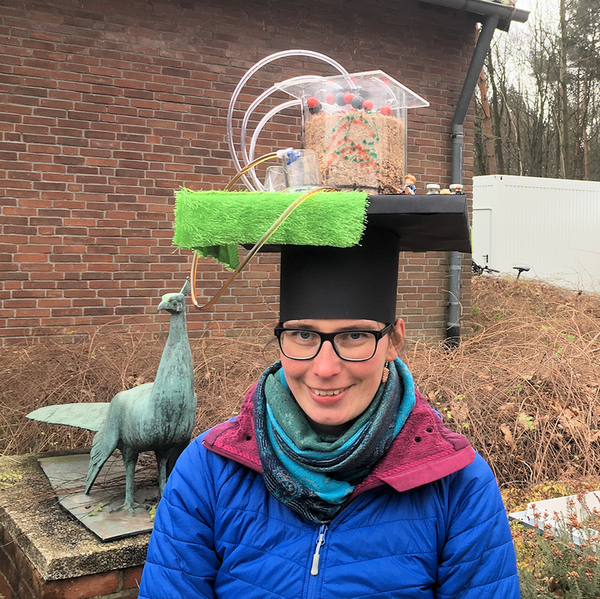
On February 4th, 2022, Annelie Säurich successfully defended her doctoral thesis “Influences on mineralisation rates of organic soils under agriculture” at the Faculty of Chemistry, Pharmaceutical Sciences, Geography and Geosciences of the Johannes Gutenberg-University Mainz (Soil Geography, Prof. Sabine Fiedler)). The thesis was part of the first German Agricultural Soil Inventory.
Drained organic soils are an important source of greenhouse gas emissions from agriculturally used soils. The lower boundary of the soil organic carbon (SOC) content of organic soils is, however, defined differently in different classification systems. SOC contents are diminished by mineralisation and, additionally, sand had been applied to organic soils to improve trafficability, leading to a mixture of peat and sand in the topsoils. While factors influencing CO2 emissions from “true” peat are comparatively well examined, there have been nearly no studies on organic soils at the boundary between mineral soils and peat.
In a first incubation experiment, Annelie studied a large sample set with a wide range of soil properties. She could show that basal respiration increased with increasing degradation and disturbance, but became also more variable. While respiration rates of weakly disturbed bog peat were lower than those of fen peat, there were no differences for strongly degraded bog and fen peat. Overall, nutrient content, pH-values and CN-ratios were relevant factors, but could not explain the highly variable respiration rates of very strongly disturbed samples with low SOC content. [Publication]
The second incubation experiment was conducted with intact soil columns from bog and fen peat sites under grassland use with and without sand cover. From each site, samples from both the topsoil and the weakly decomposed subsoil were taken. Annelie could demonstrate that topsoils reacted more strongly to changes in soil moisture, that peat-sand mixtures showed high respiration rates and that plant-available phosphorus was the most important explanatory variable for respiration rates. As in the first experiment, degraded bog peat showed as high respiration rates as fen peat. [Publication]
Finally, Annelie analysed the properties of the soil organic matter of those soil columns. Soil chemical properties of bog and fen peat became more similar with degradation, but this did not influence respiration rates when analysing topsoils and subsoils separately. Surprisingly, there was no enrichment of recalcitrant substances in the topsoil (e.g. phenolics, aromatics). Results of the study imply that chemical composition of topsoil peat is not the reason for higher mineralisation rates compared to subsoil peat, but rather a consequence of decomposition and transformation. [Publication]
Overall, Annelie’s thesis could show, that sand covers as typically managed seem not to be effective mitigation measures, that nutrient availability superimposes possible effects of the composition of the organic matter on respiration rates, and that the decomposability of organic soils does not decrease with degradation.

![[Translate to English:] [Translate to English:]](/media/_processed_/6/4/csm_titel_CO2Kampagne8_afeea2273e.png)
![[Translate to English:] [Translate to English:]](/media/_processed_/4/1/csm_titel_93px_CO2Kampagne8_9b0f3354d4.png)





